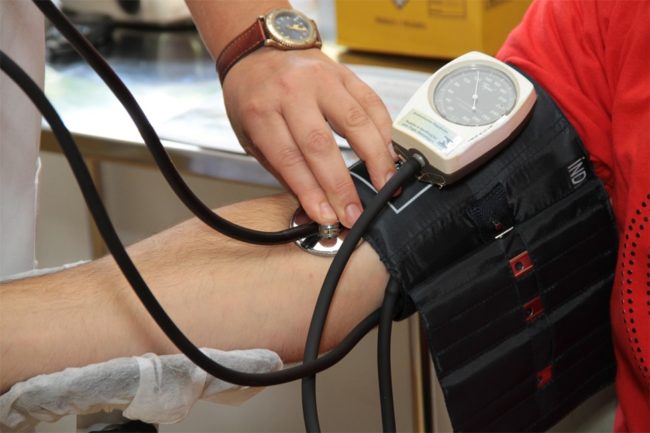
Rebirth of Physician Practices In The Post‐Pandemic Era
ʺWhen the ordinary retreat, the resilient reinventʺ
Steve Gleason/New Orleans Saints (#37)
Let me tell you a story about how resilience can help us overcome tragedy in the face of life during and after the coronavirus pandemic.
As you may recall, New Orleans was the epicenter of destruction during and after Hurricane Katrina in 2005. While this epic storm devastated property and life as it had been known, it truly fractured relationships as tens of thousands had to relocate to various cities since they had no homes, jobs and needed to enroll their children in new schools. Yet, through sheer determination and the will to return to their beloved city, the majority of New Orleanians have returned and developed a stronger and more progressive city.
The sentinel event which captured the spirit of New Orleans and return to some sense of normalcy occurred on September 25, 2006 when the New Orleans Saints returned to the Mercedes Benz Superdome for the first time in over a year on Monday Night Football to face their division nemesis, the Atlanta Falcons. While the Saints have always represented the soul of New Orleans, this setting could not have been more perfectly scripted. After the Falcons received the kickoff and went three and out, and after only 90 seconds into the game, Steve Gleason (#37), a special teams stalwart, blocked the punt and teammate Curtis Deloatch returned it for a touchdown! To this day, those in attendance, including the announcers, said they have never heard a collective chorus of sheer joy any louder than on that September night.
While the Saints were pre‐destined to win, this was more than a football game. It signified the rebirth of a city. In fact, there is a statue entitled ʺRebirthʺ near the southeast corner of the Mercedes Benz Superdome which memorializes this iconic play. Sadly, approximately 5 years after this game, Steve Gleason discovered he had ALS. During his 9 years of battling this devastating disease, Steve has become a champion in the fight for a cure and epitomizes the type of person we all aspire to be through his love of life and gifts of encouragement and hope.
Thus, analogues to the aftermath of Hurricane Katrina, when we are able to return to operating medical practices toward the end of this pandemic, what will ʺnormal” look like? We must return to the fundamentals of operating practices and focus on improving and reinventing certain areas for operational improvement, those being (1) Reimbursement Systems, (2) Billing and Collection Processes, (3) Accounts Receivable Management, (4) Operations Improvement and (5) Practice Growth. Letʹs examine how we can use these five levers for performance improvement to increase practice profitability even greater in the days ahead.
The process for implementing sustainable change in medical practices in the post‐pandemic future involves the following:
I. Reimbursement Systems
1. Implementation of Telemedicine Services
- The silver lining of the pandemic has been the rapid proliferation of telemedicine visits and consults. Over a matter of weeks, we have seen a transformation in the future of healthcare delivery out of necessity in being sequestered from human interaction and the public has quickly accepted the benefits of telemedicine. While telemedicine is thought to be mostly used by primary care providers, there are services that specialists can provide via telemedicine, such as follow‐up of various disorders (i.e. post-op/procedures), pre‐visit consultations, etc. As medical practices become more sophisticated in their use of telemedicine, they may want to explore the development of formalizing their telemedicine programs, such as using video conferencing products, free video chat apps, electronic signature software for patient forms and consents, etc. Physicians must also be mindful that there is competition in the telemedicine arena by proprietary companies (i.e. TeleDoc) as well as various local physicians and corporate medical practices.
- Medical practices have begun to realize the benefits of performing patient assessments (within limits) through telehealth visits, online digital visits, remote patient monitoring, and telephonic evaluation and management (E&M) services. In addition, practices have begun providing other telemedicine services such as Medicare Annual Wellness Visits (AWV) and Chronic Care Management (CCM), etc.
2. Development of Coding Compliance Program
- Conduct Evaluation and Management Coding Utilization Analysis (including telemedicine codes) in order to determine compliance against CMS Audit Standards and determine areas of potential undercoding or overcoding.
- Performance of Documentation Chart Audits to ensure appropriate documentation and medical necessity vis‐a‐vis procedural coding.
- Conduct and document educational sessions in order to review the outcome of this assessment process to satisfy compliance requirements and establish an action plan for improvement.
3. Conduct professional fee schedule review to determine reimbursement by the top CPT‐4 codes by frequency for the top 10 payers
- Detect opportunities for fee schedule adjustments and/or negotiation with managed care companies
4. Conduct reimbursement validation analysis to determine contract compliance by insurers and document payment at contracted rates
5. Consider outsourcing Medicare Annual Wellness Visits (AWV) and Chronic Care Management (CCM) if practice lacks internal resources to provide these services
6. Perform charge/collection/adjustment analysis by payer to determine gross collection rate (GCR) and net collection rate (NCR)
- Target payers for re‐negotiation
- Consider opting out of specific contracts depending on revenue value to practice
7. Focus on risk‐stratified care management (value‐based care) programs, i.e. ACOʹs, MSSP, MIPS, etc.
- Cautiously approach these programs regarding the qualifying criteria pertaining to the determination of incentive payments v. payback requirements
II. Billing and Collection Processes
1. Monitor upfront collections regarding co‐payments, deductibles, outstanding balances and non‐covered services
- Set monthly targets
2. Establish acceptable turnaround regarding submission of initial claims and rebilling of denied/rejected claims
3. Develop claim denial and rejection follow‐up processes
- Monitor weekly
- Track reasons
- Provide ongoing education to reduce the frequency
- Assess the impact of delayed cash flow
4. Monitor credit balances to ensure prompt repayment of Medicare and Medicaid overpayments within 60 days
- Failure to refund overpayments will result in false claim penalties
5. Assess cost/benefit of in‐house v. outsourcing of Revenue Cycle Management
activities
- Must examine both costs to provide services against the effectiveness of performance metrics
6. Develop system for tracking compliance with patient payment plans
7. Ensure consistent performance by responsible staff members regarding insurance verification/eligibility and pre‐authorization processes
- Maximize information system capabilities
8. Formalize/standardize financial policies and procedures
III. Accounts Receivable Management
1. Utilize the 80/20 analysis in managing the Accounts Receivable Aged Trial
Balance By Payer
- Approximately 20% of insurers will represent 80% of Total A/R dollars
- Focus on the A/R ATB for the 20% in order to gain the greatest impact in the shortest amount of time
2. Adopt strategies for collection of patient balance accounts
- Patient payment plans
- Utilization of third parties, i.e. collection agencies, credit bureaus, small claims court, etc.
- Early Out Program
- Outsource all patient balance accounts
3. Develop monthly audit of A/R ATB regarding insured accounts at 60+ days
- Review notes for each claim and information needed to complete claim or reason for non‐payment if claim is complete
4. Review charge/collection/adjustment ratios by payer to detect areas of low reimbursement and/or delayed payments
5. Quarterly monitoring of collection agency performance regarding patient balance accounts and determine acceptable performance metrics
6. Feasibility of outsourcing 90+ insurance accounts
7. Feasibility of outsourcing all patient balance accounts through Early Out Program
IV. Operations Improvement
1. Develop Business Continuity Plan to prepare for recovery from losses in patient revenue, ongoing labor costs and supply expense
- Continue to explore Federal/State financial assistance programs
2. Manage supply inventory on hand to meet patient demand, but avoid excessive inventory and supply expense through monitoring usage and assurance from vendors about reasonable turnaround time for supplies and pharmaceuticals
- Ensure availability of Personal Protective Equipment (PPE)
3. Embrace digital healthcare solutions in every feasible aspect of practice to increase efficiency
4. Assess office space requirements/lease needs as practice increases utilization of telemedicine and other offsite services, i.e. business office operations
5. Develop operating/cash flow budgets to reflect changes in patient care delivery (telemedicine) and support services (offsite coding, business office operations, scheduling, etc.)
6. Assess cost/benefit of remote patient monitoring via telehealth
7. Develop Asset Management Plan
- Repayment of SBA loans (if applicable)
- Consider Bank Line of Credit (LOC)
- Establish capital reserve account
8. Consider joining national Group Purchasing Organization (GPO) through professional societies
9. Review mix of personnel, i.e. FT, PT, contract labor, RN/LPN v. MA, etc.
10. Assess capability of integrating telemedicine software with current MIS/EMR v. standalone system
11. Implement formal Medical Practice Compliance Program
- Increased scrutiny regarding HIPAA Privacy and Security Standards with telemedicine
12. Develop ʺDisaster Recovery Planʺ
- Notify patients when safe to return to practice and conditions under which patients will be seen onsite
- Notification Process
- Social/print media
- Email patients
- Referring physicians
- Hospitals
- Community agencies
- Critical vendors
13. Consider adding extended hours access to routine and urgent care via telemedicine
14. Explore all options for outsourcing non‐clinical services
15. Assess feasibility of continuing current ancillary services v. developing new modalities
16. Review Physician/Provider Compensation Program
- Adjustments necessary in base salary, incentive compensation (quantitative
v. qualitative), etc.
17. Develop actionable monthly financial/operational reports
18. Develop effective patient recall system, particularly for patients not seen within latest 12‐month period
19. Follow‐up with no‐show patients to attempt to re‐book appointments
20. Explore ways to improve patient volume capacity through improved scheduling
21. Establish benchmarks for physician/provider productivity and share through individual monthly reports
22. Conduct Provider Compensation/Productivity Analyses to ensure fair market value compensation for hospital-affiliated physicians/providers
23. Track charges, collections, expenses and net profit/loss by patient and by WRVU
24. Review Personnel Policies and Procedures to determine areas of potential savings, i.e. employee benefits such as PTO, etc.
- Address policies related to furloughs and deferral of compensation in times
of emergency
25. Assess cost/benefit of IT support
26. Review patient flow/patient process redesign options to promote efficiency
27. Conduct internal training and education regarding areas for regulatory compliance
V. Practice Growth
1. Consider practice mergers regarding the development of larger single-specialty or multi‐specialty group
- Assess economies of scale
- Benefits of standardization/centralization
2. Explore sale of practice to hospitals, FQHCʹs, Private Equity (PE) companies,
etc.
3. Develop a marketing plan/budget
- Use of social media
- Website development/enhancement with a patient portal
- Address differences between primary care v. specialty care in terms of target markets
4. Review frequency of CPT‐4 and ICD‐10 codes to determine types of patients currently being seen in practice
- How can practice redesign benefit targeted procedure and/or diagnosis
codes (patients)?
5. For specialty practices, conduct Physician Referral Analysis to determine number of referrals by physician by total charges and payer mix
6. Conduct Patient Origin Analysis to determine the geographic distribution of patients and potential areas for office expansion
7. Development of E‐Business Strategy for practice, i.e. telemedicine, increased use of IT resources, social media, etc.
8. Develop Practice Strategic Plan
- Conduct SWOT Analysis (Strengths, Weaknesses, Opportunities and
Threats) - Determine future areas of focus/development
- Determine what to STOP doing/offering
9. Assess the benefits of participating with a Management Services Organization (MSO)
- Cost/benefit of providing various services in‐house v. outsourcing
10. Review Payer Contracting Organizations to determine the benefits of
continuing certain arrangements
11. Assess benefits of participating with various physician networks, i.e. ACOʹs, clinical integration networks, etc.
12. Explore opportunities for contracting with hospitals to provide specific services, such as call pay, medical directorships, clinical co‐management arrangements, etc.
13. Consider feasibility of concierge model for Primary Care physicians and certain specialties with chronic disease patients, i.e., Cardiology, Endocrinology, Pulmonology, Nephrology, etc.
Indeed, the practice of medicine in the aftermath of the coronavirus pandemic will allow practices to reinvent themselves. While most of us live in a comfort zone and are unwilling to change, “necessity is the mother of invention” and true innovation takes place outside of our comfort zone. In life, real growth usually results from difficult times. We should all learn the lessons from this tragedy and apply them toward providing healthcare in a much smarter and more convenient manner while improving the quality of life of both patients and those dedicated to healing them.
John W. McDaniel, MHA
Founder and Chairman
© 2020
This article has been approved for publication by the Journal of Medical Practice Management (American Association for Physician Leadership).
Originally posted Peak Performance Physicians.
If you’re considering working with us here at Mosaic, we invite you to learn more about who we serve and how we help them. You can also contact us with any questions you have.
Securities and advisory services offered through Cetera Advisors LLC, Member FINRA/SIPC, a broker/dealer and a Registered Investment Advisor. Cetera is under separate ownership from any other named entity.







